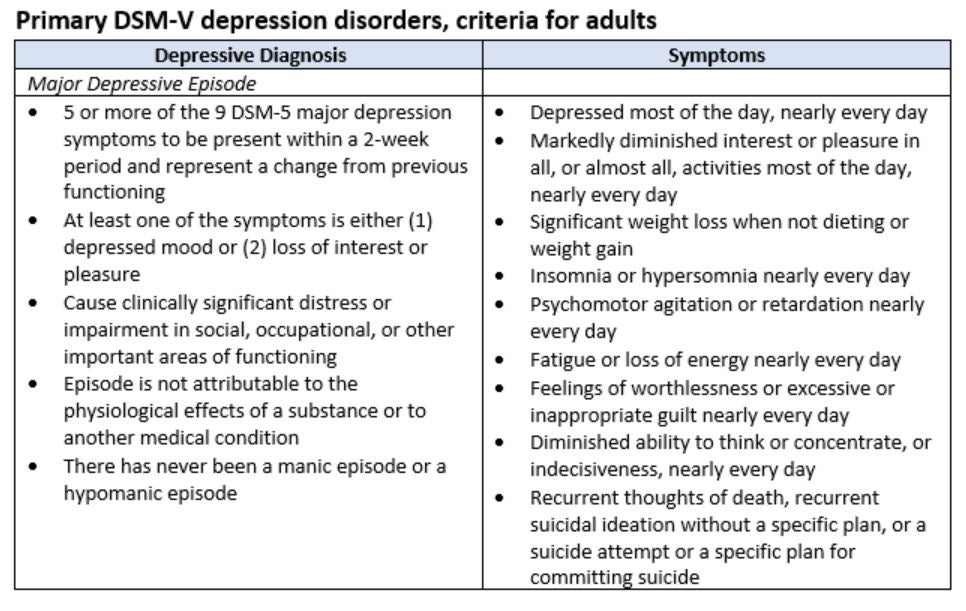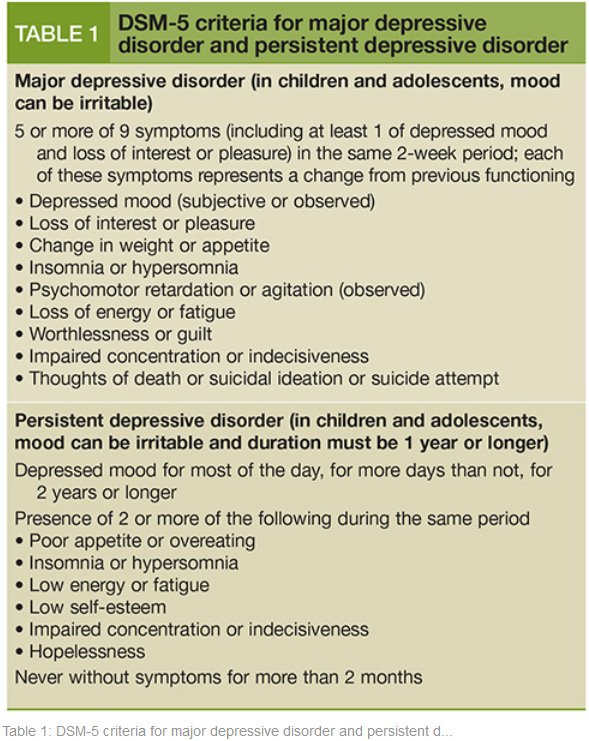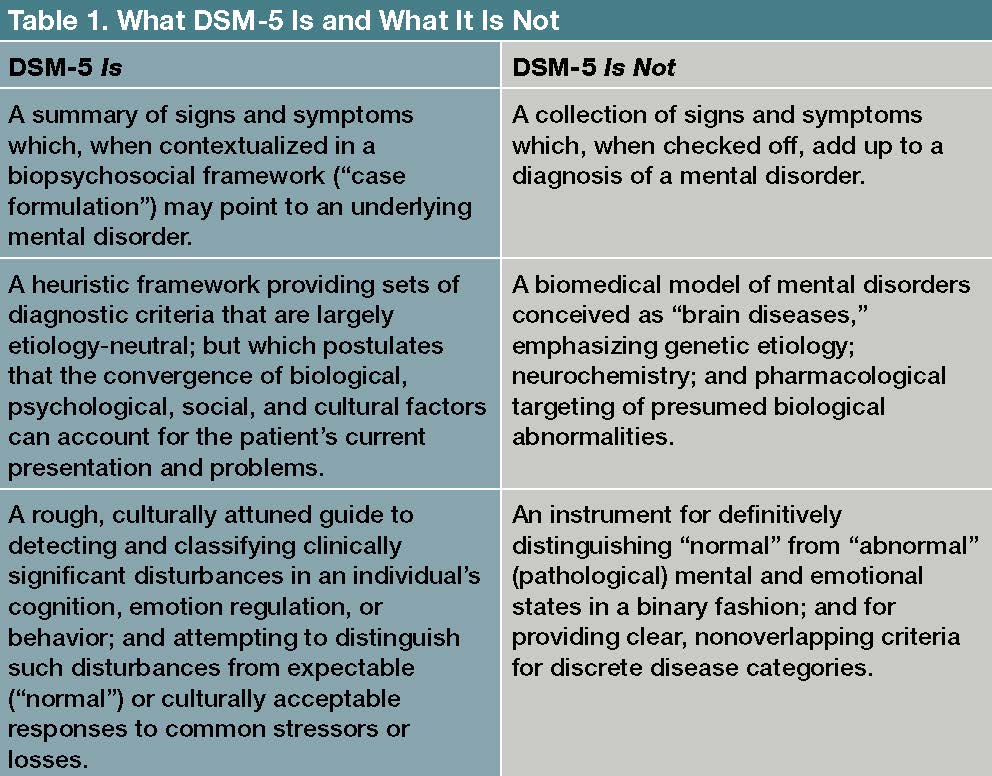What Is The Dsm 5 Criteria For Depression
As you probably know psychiatrists are medical doctors who have taken further specialized training in mental health. What is DSM IV criteria for depression.
Persistent Depressive Disorder Dysthymia DSM 5 criteria for dysthymia include depressed mood for most of the day for more days as indicated by others subject or observations for at least two days.
What is the dsm 5 criteria for depression. At least 5 of the following symptoms have to have been present during the same 2-week period and at least 1 of the. While the former diagnosis is for children ages between 6 years to 18 years. Both the DSM-5 and ICD-10 have fairly similar criteria for diagnosing depression.
81 bipolar II disorder current episode manic mild severity with mixed features. There is evidence from the history physical examination or laboratory findings that the disturbance is the direct. It is a modified version of the DSM episode severity specifier.
Depressed mood most of the day for more days than not for at least 2 years and the presence of two or more of the following symptoms that cause clinically significant impairment in social work or other important areas of. Significant weight loss or poor appetite or weight gain or failure to gain appropriate weight. Much of the recent conversation has focused on the implication for the Diagnostic Statistical Manual of Mental.
Markedly diminished interest or pleasure in most or all activities. F Five or more of the following symptoms have been present during the same 2-week period and represent a change from previous functioning. The DSM 5 definition of Depression is that the individual must be experiencing five or more symptoms during the same 2-week period and at least one of the symptoms should be either 1 depressed mood or 2 loss of interest or pleasure.
What is the DSM-5 code for bipolar disorder. Overeating or loss of appetite. The individual must be experiencing five or more symptoms during the same 2-week period and at least one of the symptoms should be either 1 depressed.
The patient must have had five or more of the symptoms listed below and these must have been present during the same two-week period and be a change from previous functioning. Depressed mood is the most reliable DSM-5 symptom to discriminate moderate depression from non-depression whereas anhedonia emerges as an important criterion when depression becomes more. A prominent and persistent period of depressed mood or markedly diminished interest or pleasure in all or almost all activities that predominates in the clinical picture.
It is attributed to the occurrence of the following symptoms while depressed. Major Depressive Disorder Major Depressive Episode. High levels of negativity a difficult childhood and life stressors like divorce or loosing a job can be precursors to depression.
In DSM 5 depression criteria and categories have been revised. At least one of the symptoms is either 1 depressed mood or 2 loss of interest or pleasure. The specific DSM-5 criteria for major depressive disorder are outlined below.
DSM-5 diagnostic criteria for depression To diagnose depression major depressive disorder the following DSM-5 criteria need to be met. Depression DSM-5 Diagnostic Criteria The DSM-5 outlines the following criterion to make a diagnosis of depression. The main feature of this diagnosis is irritability and frequent tantrums.
Two new categories in depressive disorder are added as disruptive mood dysregulation disorder and premenstrual dysphoric disorder PMDD. How many categories of depression does the DSM-5 recognize. And d Identify signs of Persistent Complex Bereavement Disorder in future work with clients.
PMDD is related to the intense. 1 no or almost no depressive symptoms. Criteria for Major Depression in the DSM-5.
However those of the DSM-5 are a little more complex. The two main diagnostic criteria for depression depressed mood and loss of interest or pleasure differ regarding their discrimination ability when the level of depression is considered. Feelings of worthlessness or excessive or inappropriate guilt.
What are the DSM 5 diagnostic criteria for depressive disorder due to another medical condition. Depressed mood or irritability. Fatigue or loss of energy.
However the DSM-5 and ICD-10 are tools meant to be used mainly by professional psychiatrists. The relationship between grief and depression following bereavement has been debated in the literature as well as in the general public media. People with depression are at risk of suicide especially if they have made attempts or threats in the past.
Females are diagnosed with depression 15 to 3 times more than males DSM-5.

Dsm 5 Criteria For Major Depressive Disorder Vs Icd 10 Download Scientific Diagram

Major Depressive Disorder With Mixed Features A Review

Depressive Disorders Dsm 5 Depressive Disorders At The

Diagnostic Criteria For Major Depressive Disorder Mdd In The Dsm 5 Download Table

How To Diagnose Depression Diagnostic Clinical Interview

Summary Of Dsm 5 Criteria For Bipolar Disorders Download Table

Summary Of Dsm 5 Criteria For Depressive Disorders Download Table
Other Specified Dissociative Disorder And Ddnos Types Criteria And Research

Assessment And Intervention For Bipolar Disorder 1 It

10 377 Ways For Major Depression But 341 737 Ways For Melancholia Eiko Fried

Diagnostic Criteria For Manic Depressive And Mixed States According To Download Scientific Diagram

Bipolar Disorders In The New Dsm 5 And Icd 11 Classifications Semantic Scholar

Chapter 7 Mood Disorders And Suicide Ppt Download

What Is Delusional Disorder Dsm 5

Hcc Coding Major Depressive Disorder Specificity Makes A Difference Chess Health Solutions

Dsm5 Diagnostic Criteria For Major Depressive Disorder Download Scientific Diagram

Dsm 5 Criteria For Major Depressive Disorder And Persistent Grepmed

Proposed Revision In Dsm 5 Criteria For Identifying Attenuated Download Table


Post a Comment for "What Is The Dsm 5 Criteria For Depression"